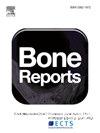Can AI reveal the next generation of high-impact bone genomics targets?
IF 2.6
Q3 ENDOCRINOLOGY & METABOLISM
引用次数: 0
Abstract
Genetic studies have revealed hundreds of loci associated with bone-related phenotypes, including bone mineral density (BMD) and fracture risk. However, translating discovered loci into effective new therapies remains challenging. We review success stories including PCSK9-related drugs in cardiovascular disease and evidence supporting the use of human genetics to guide drug discovery, while highlighting advances in artificial intelligence and machine learning with the potential to improve target discovery in skeletal biology. These strategies are poised to improve how we integrate diverse data types, from genetic and electronic health records data to single-cell profiles and knowledge graphs. Such emerging computational methods can position bone genomics for a future of more precise, effective treatments, ultimately improving the outcomes for patients with common and rare skeletal disorders.
人工智能能否揭示下一代高影响骨基因组学目标?
遗传学研究已经揭示了数百个与骨相关表型相关的基因座,包括骨矿物质密度(BMD)和骨折风险。然而,将发现的基因座转化为有效的新疗法仍然具有挑战性。我们回顾了包括pcsk9相关药物在心血管疾病中的成功案例,以及支持使用人类遗传学指导药物发现的证据,同时强调了人工智能和机器学习的进展,这些进展有可能改善骨骼生物学中的靶点发现。这些策略将改善我们如何整合各种数据类型,从遗传和电子健康记录数据到单细胞概况和知识图谱。这种新兴的计算方法可以为未来更精确、更有效的治疗定位骨基因组学,最终改善患有常见和罕见骨骼疾病的患者的治疗效果。
本文章由计算机程序翻译,如有差异,请以英文原文为准。
求助全文
约1分钟内获得全文
求助全文
来源期刊

Bone Reports
Medicine-Orthopedics and Sports Medicine
CiteScore
4.30
自引率
4.00%
发文量
444
审稿时长
57 days
期刊介绍:
Bone Reports is an interdisciplinary forum for the rapid publication of Original Research Articles and Case Reports across basic, translational and clinical aspects of bone and mineral metabolism. The journal publishes papers that are scientifically sound, with the peer review process focused principally on verifying sound methodologies, and correct data analysis and interpretation. We welcome studies either replicating or failing to replicate a previous study, and null findings. We fulfil a critical and current need to enhance research by publishing reproducibility studies and null findings.
 求助内容:
求助内容: 应助结果提醒方式:
应助结果提醒方式:


